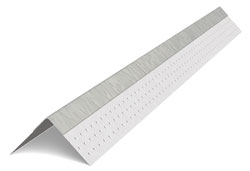I have a long narrow gap in the ceiling where it meets the wall. It is too big for plaster and tape, but too small (and uneven) to cut a piece of drywall.
Furthermore, unlike in this question, there is no wood to fill with plaster.
What is the best approach to fix this?


